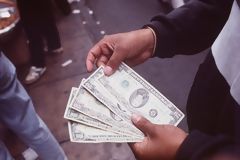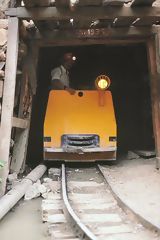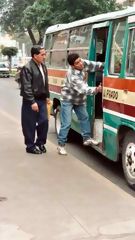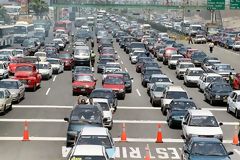 Administrative division: 24 departments and 1 constitutional province, which are:
Administrative division: 24 departments and 1 constitutional province, which are:
Amazonas, Ancash, Apurimac, Arequipa, Ayacucho,
Cajamarca, Cusco, Huancavelica, Huanuco, Ica,
Junin, La Libertad, Lambayeque, Lima, Loreto,
Madre de Dios, Moquegua, Pasco, Piura, Puno,
San Martín, Tacna, Tumbes, Ucayali, and Callao.
The political system of Peru is a constitutional republic with a president elected for a five-year term. The current president is responsible for law enforcement, national defense, and international diplomacy. Legislative power is held by a unicameral congress, which is also elected every five years. Peru went through several periods of military governments before achieving stable democracy at the end of the 20th century. The political system was strengthened by the adoption of a modern constitution in 1993 under the government of Alberto Fujimori Fujimori.
Since then, elections have been held regularly, and several presidents have marked Peru's recent history, including Alan García Pérez, despite corruption scandals that have shaken public trust. However, democratic institutions have strengthened over the decades, and Peru now enjoys a relatively stable political system compared to other countries in the region.
Peru's decentralization process has allowed departments to gain greater autonomy in managing local affairs, though the central government in Lima retains predominant power, especially in foreign policy, defense, and public finances. Each department is headed by a governor, elected by direct suffrage, and has a regional council to handle local administration.
Peru also plays an active role in international organizations such as the Organization of American States (OAS) and the UN. The country has been key in regional negotiations to resolve border conflicts with neighboring countries, particularly with Ecuador in the 1990s.
 Peru's economy has gradually transitioned into a market economy, characterized by a series of privatizations in the mining and telecommunications sectors in the early 1990s. The country is rich in natural resources, particularly copper, silver, and gold, which represent a large share of national exports.
Peru's economy has gradually transitioned into a market economy, characterized by a series of privatizations in the mining and telecommunications sectors in the early 1990s. The country is rich in natural resources, particularly copper, silver, and gold, which represent a large share of national exports.
In the 1980s, Peru's economy suffered from hyperinflation, reaching record levels in 1988 with over 7,000% inflation. This period of economic crisis was also marked by a significant increase in foreign debt. Relations with international financial institutions, such as the IMF and the World Bank, were severed due to the government's decision to suspend debt payments in 1985.
It was only when Alberto Fujimori Fujimori took office in 1990 that a strict austerity program was implemented, gradually restoring the confidence of foreign investors. The measures led to an economic recovery by 1993, with 6% growth, followed by 8.6% in 1994. Monetary stability was also restored through radical reform, which successfully controlled inflation.
 Despite this economic recovery, Peru remains vulnerable to fluctuations in global commodity prices, particularly copper, one of its main export products. Additionally, Peru’s economy is regularly impacted by climatic conditions, such as the El Niño phenomenon, which causes droughts and floods, affecting agriculture and fishing industries.
Despite this economic recovery, Peru remains vulnerable to fluctuations in global commodity prices, particularly copper, one of its main export products. Additionally, Peru’s economy is regularly impacted by climatic conditions, such as the El Niño phenomenon, which causes droughts and floods, affecting agriculture and fishing industries.
Over the past two decades, Peru has also diversified its economy, developing industries such as tourism, agro-industry, and financial services. The tourism sector has become one of the main sources of foreign currency, with iconic sites like Machu Picchu attracting millions of visitors annually.
In 2020, Peru's economy was hit hard by the COVID-19 pandemic, leading to a major recession and an increase in unemployment. However, due to structural reforms implemented in previous years, the country was able to initiate a quick recovery in 2021, with positive growth projections for the coming years.
 With over 33 million inhabitants, Peru has a vast transportation network, though its quality is often uneven. The country has approximately 70,000 kilometers of roads, but much of the infrastructure is in poor condition, especially in rural areas. Lima, the capital, houses the Jorge Chávez International Airport, which serves major cities in Latin America, the United States, and Europe.
With over 33 million inhabitants, Peru has a vast transportation network, though its quality is often uneven. The country has approximately 70,000 kilometers of roads, but much of the infrastructure is in poor condition, especially in rural areas. Lima, the capital, houses the Jorge Chávez International Airport, which serves major cities in Latin America, the United States, and Europe.
National airlines, such as AeroPeru and Latam, offer regular domestic flights, although airport taxes are sometimes high. Bus journeys are also very popular, particularly for reaching remote regions. However, these trips can be dangerous at night, with the risk of robberies on some routes.
 Peru's railway network, though limited, is one of the most spectacular in the world, with lines like the one connecting Cuzco to Aguas Calientes, leading directly to Machu Picchu. However, trains are often subject to disruptions due to weather and geological conditions, such as landslides.
Peru's railway network, though limited, is one of the most spectacular in the world, with lines like the one connecting Cuzco to Aguas Calientes, leading directly to Machu Picchu. However, trains are often subject to disruptions due to weather and geological conditions, such as landslides.
In the Amazon region, river transport is crucial, as rivers are often the only way to connect isolated communities. Water taxis regularly travel along the country's 8,600 kilometers of navigable waterways, linking cities like Iquitos and Pucallpa.
Peru's main ports are Callao, Chimbote, Ilo, Iquitos, Matarani, and Paita. These ports play a vital role in exporting mining, oil, and agricultural products, especially to Asian and North American markets. Developing port infrastructure is a priority for the Peruvian government to increase the country's competitiveness in international markets.